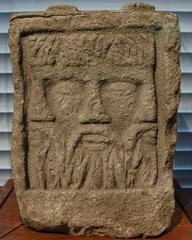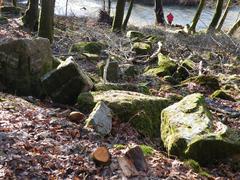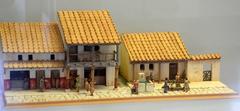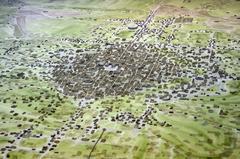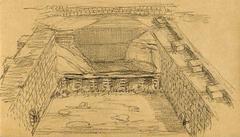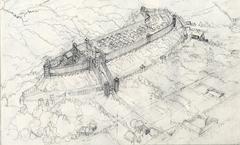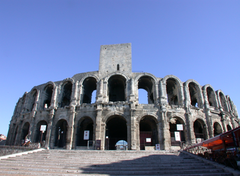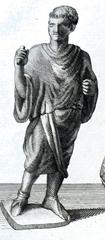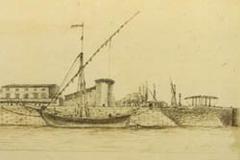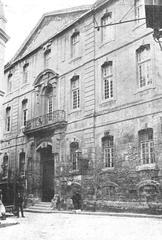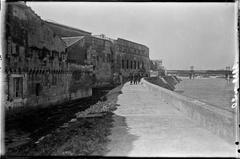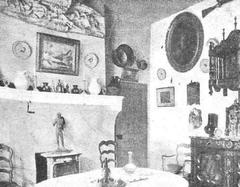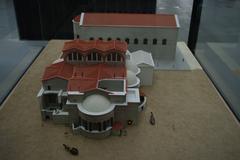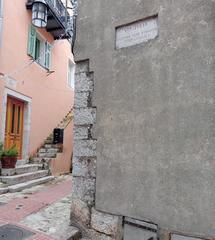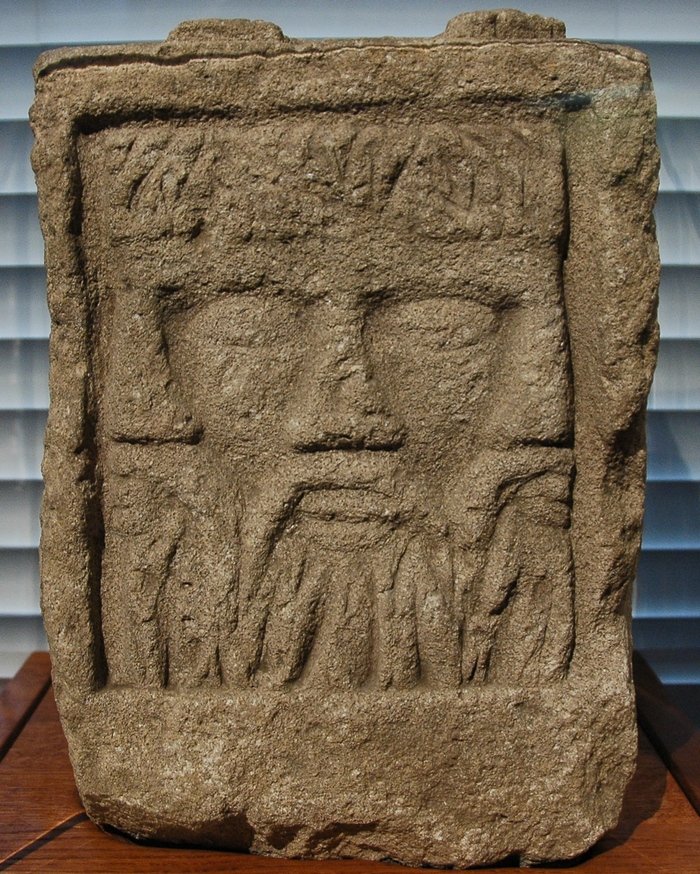
Roman Gaul Arles France: Visiting Hours, Tickets, and Historical Sites Guide
Date: 14/06/2025
Introduction
Arles, once known as Arelate, is a living testament to the grandeur of Roman civilization in southern Gaul. Established as a Roman colony by Julius Caesar in the mid-1st century BCE, Arles quickly became a strategic commercial and military hub thanks to its prominent location on the Rhône River. By the fourth century CE, it had earned the title “little Rome of the Gauls,” recognized for its urban sophistication and cultural influence (Archaeology Magazine; Ancient Theatre Archive). Today, Arles’ compact city center invites visitors to explore remarkably preserved Roman monuments—among them, a stunning amphitheatre, an ancient theatre, and the evocative remnants of the Roman circus. This guide provides comprehensive information on visiting hours, ticketing, accessibility, and travel tips, as well as insight into the city’s historical and cultural richness.
Table of Contents
- Introduction to Roman Arles: Historical Context and Significance
- Arles in Roman Gaul: Foundation and Strategic Importance
- Major Roman Monuments in Arles
- Economic, Political, and Cultural Significance
- Religious and Funerary Sites: The Alyscamps Necropolis
- Transformation and Legacy
- Practical Information for Visitors
- Essential Travel Tips
- Frequently Asked Questions
- Visual and Virtual Experiences
- Cultural Insights and Local Etiquette
- Summary and Recommendations
- References
Arles in Roman Gaul: Foundation and Strategic Importance
Arles’ prominence in Roman Gaul stemmed from its advantageous position along the Rhône River. Julius Caesar founded the city as a colony for his veterans in 46 or 45 BCE, cementing Roman influence in the region (Archaeology Magazine; Ancient Theatre Archive). The city’s access to Mediterranean and inland trade routes fostered rapid economic and urban expansion, earning Arles its reputation as a leading Roman city.
Major Roman Monuments in Arles
Roman Amphitheatre (Les Arènes d’Arles)
Overview:
Built around 90 CE, the amphitheatre is among the largest in Roman Gaul, seating up to 21,000 spectators and echoing the grandeur of Rome’s Colosseum (BonAdvisor; France Guide). Historically, it hosted gladiatorial games and public events; today, it remains a venue for concerts and festivals.
Visiting Hours:
- April–September: 9:00 AM – 7:00 PM
- October–March: 9:30 AM – 5:30 PM
(Check Arles Tourism for seasonal updates.)
Tickets:
- Adults: ~€10–€11
- Reduced rates available; combination tickets and city passes provide savings.
Accessibility:
- Entrance ramps and facilities for visitors with reduced mobility; some areas remain uneven.
Visitor Tips:
- Climb the entrance tower for panoramic city views.
- Free entry on special occasions such as the Fête du Costume (marvellous-provence.com).
Roman Theatre (Théâtre Antique)
Overview:
Constructed in the late 1st century BCE, it is one of the earliest stone theatres in Roman Gaul (Ancient Theatre Archive). Seating up to 8,000, the theatre once hosted plays and gatherings and still serves as a cultural venue.
Visiting Hours:
- Daily, 9:00 AM – 7:00 PM
- Included with the amphitheatre ticket or ~€6 individually.
Accessibility:
- Some uneven terrain; partial wheelchair access.
Roman Circus
Overview:
Though only archaeological remains survive, the Roman circus was once a vast arena for chariot races, accommodating up to 20,000 spectators. Artifacts are displayed in the Archaeological Museum (Brainy Backpackers).
Residential Areas and Artistic Highlights
Recent discoveries on the Rhône’s right bank reveal opulent Roman houses with exquisite Bacchic wall paintings—evidence of the city’s artistic and cultural vitality (Archaeology Magazine).
Economic, Political, and Cultural Significance
Arles thrived as a commercial port, administrative seat, and cultural crossroads. Its prosperity led to grand public buildings and luxurious residences (Archaeology Magazine). Roman, Gallic, and Christian influences mingled in its monuments and festivals, fostering a unique local identity.
Religious and Funerary Sites: The Alyscamps Necropolis
The Alyscamps necropolis, located outside the ancient city walls, was a distinguished burial ground in the Roman West and later a renowned Christian pilgrimage site (France Guide). Its tree-lined avenues and sculpted sarcophagi inspired artists like Van Gogh.
Transformation and Legacy
In late antiquity, Arles adapted to new realities—some Roman monuments were repurposed for Christian use (Brainy Backpackers). Today, Arles’ Roman and Romanesque monuments are UNESCO World Heritage Sites (UNESCO), celebrated for their preservation and historical significance.
Practical Information for Visitors
Visiting Hours and Ticketing
Most Roman monuments are within walking distance in the city center. The Arles Liberty Pass (Pass Liberté) and Pass Avantage offer access to several key sites and museums at a reduced rate. Typical hours:
- March–October: 9:00 AM–6:00 PM (7:00 PM in May–September)
- November–February: 10:30 AM–4:30 PM
For up-to-date schedules and ticket options, visit the official tourism website.
Accessibility
Major monuments have ramps and adapted facilities, although some ancient structures have uneven surfaces. Museums and newer attractions are generally wheelchair accessible.
Guided Tours and Events
Private and group tours are available, focusing on Roman history, art, and architecture (BonAdvisor). The city hosts seasonal festivals, including the Rencontres d’Arles photography festival and Arelate – Roman Days with historical reenactments.
Museums and Nearby Attractions
The Musée Départemental Arles Antique showcases over 18,000 Roman-era artifacts, including the renowned bust of Julius Caesar and a Roman barge (delveintoeurope.com). Arles is also a gateway to the Camargue Regional Nature Park and nearby cities such as Nîmes and Avignon (Brainy Backpackers).
Essential Travel Tips
- Combination Tickets: Save on entry by purchasing multi-site passes; children under 18 often enter free (marvellous-provence.com).
- Best Time to Visit: Spring and early autumn offer pleasant weather and fewer crowds.
- Getting Around: The historic center is walkable; parking is available on the city outskirts. Use local buses or taxis for sites outside the core (provence-alpes-cotedazur.com).
- Accessibility: Wear comfortable shoes, as ancient sites may have uneven terrain.
- Special Events: Check the calendar for festivals and free admission days (france-voyage.com).
Frequently Asked Questions (FAQ)
Q: Where can I buy tickets for Arles Roman monuments?
A: At site entrances, the Arles Tourist Office, or online. Multi-site passes are recommended.
Q: What are the opening hours for the amphitheatre?
A: Typically 9:00 AM–7:00 PM (May–September); reduced hours in winter. Verify on Arles Tourism.
Q: Are sites accessible for visitors with mobility issues?
A: Many are, but some ancient sites have uneven surfaces. Contact the Tourist Office for details.
Q: When is the best time to visit Arles?
A: Late spring and early autumn for optimal weather and fewer crowds.
Q: Are guided tours available?
A: Yes, in several languages and with specialized themes.
Visual and Virtual Experiences
High-quality images, maps, and virtual tours of major monuments are available on the Arles Tourist Office website. Alt text descriptions such as “Arles Roman Arena visiting hours” aid in trip planning.
Cultural Insights and Local Etiquette
- Language: French is the official language, though English is spoken at tourist venues.
- Etiquette: Greet with “Bonjour” in shops and restaurants; observe local customs and privacy.
- Cuisine: Sample regional dishes, including bull meat, Camargue rice, seafood, and local cheeses.
- Markets: Open Wednesdays and Saturdays, offering a glimpse of Provençal life and products.
Festivals:
- Rencontres d’Arles: International photography festival (July–September).
- Férias: Bullfighting festivals during Easter and September.
- Arelate – Roman Days: Historical reenactments (late August).
- Rice Harvest Festival: (September).
Summary and Recommendations
Arles presents an unparalleled blend of Roman history and Provençal culture. Its well-preserved amphitheatre, theatre, and necropolis offer a vivid window into the ancient world, while ongoing festivals and vibrant local traditions ensure a dynamic present. Take advantage of city passes, plan your visit during shoulder seasons, and consider guided tours for deeper insight. As a gateway to the Camargue and nearby Roman cities, Arles is a must-visit for history lovers and culture seekers alike.
References and Further Reading
- Archaeology Magazine
- Ancient Theatre Archive
- France Guide
- BonAdvisor
- Brainy Backpackers
- UNESCO World Heritage
- Arles Tourism
- marvellous-provence.com
- exploreyourbucketlist.com
- snippetsofparis.com
- ancientengineeringmarvels.com
- charcotrip.com
- delveintoeurope.com
- offbeatfrance.com
- arles-guide.com
- thetravelfolk.com
- lonelyplanet.com
- tourspilot.com
- provence-alpes-cotedazur.com
- franceadventurer.com
- justtravelingthru.com
- france-voyage.com
- france.fr
- lodestartravelguide.com
- francetravelblog.com
For the latest information, tickets, and virtual resources, visit the Arles Tourist Office. Download the Audiala app for real-time updates and curated travel tips.
